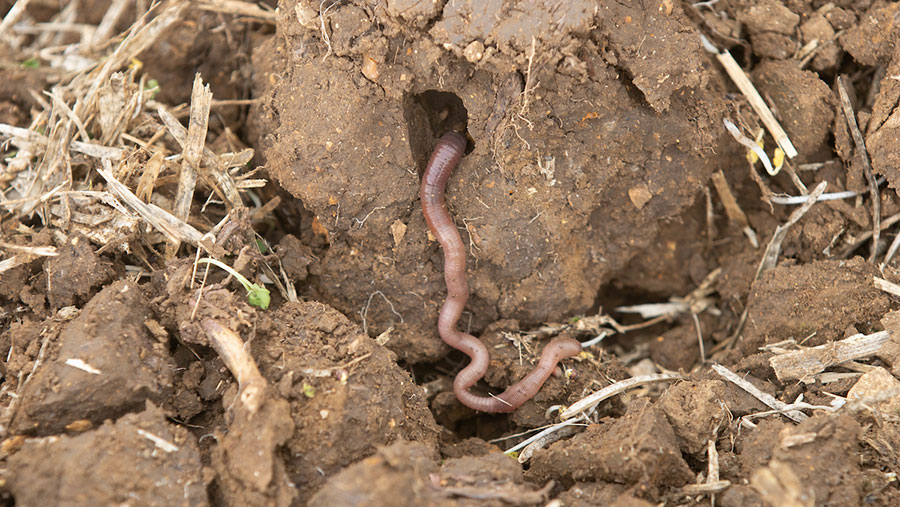Farmers to have say on soil health action plan for England
 © Tim Scrivener
© Tim Scrivener Farmers in England will soon be invited to have their say on a new government action plan to improve soil health on farms.
More details emerged on the Soil Health Action for England (Shape) at the Oxford Real Farming Conference on Friday (7 January).
Environment minister Rebecca Pow said the plan will link the range of agri-environment schemes that reward farmers to improve their soil health under Environmental Land Management, such as the Sustainable Farm Incentive (SFI) and Local Nature Recovery.
See also: Sustainable Farming Incentive 2022: What farmers need to know
Defra is focusing on soil in two of the first standards to be rolled out under the SFI scheme later the year – the Improved Grassland Soils standard and the Arable and Horticultural Soils standard.
For example, farmers will be paid to improve soil health through practices such as the introduction of herbal leys and the use of grass legume mixes and cover crops. These actions will help build soil organic matter (OM) and avoid compacting wet soil.
The benefits of healthy soils include increased biodiversity, flood mitigation, carbon storage and better food production.
“We know that soil is a rich ecosystem and is one of our greatest natural assets. The economy, the environment and wider society all benefit when soil functions effectively,” said the minister.
Ms Pow said Shape will set out how improving soil health can help achieve the balance between mitigating climate change, reversing biodiversity loss and improving productivity.
It will focus on actions in three key areas:
- To prevent soil degradation and erosion
- To protect soil by building in resilience and adaptation management
- To improve soil health by monitoring and mapping to ensure soil is effectively managed.
Shape will look at how land management practices and planning can be adapted to get farmers thinking more about their soil at the early stages of land management planning.
“This will not only protect soil from the impacts of climate change, but it will also help the soil to remain fertile,” said Ms Pow.
Soil health monitoring
Defra also wants to help land managers and farmers track the health of their soil and the impact of their management practices over time. Therefore, it intends to develop a healthy soil indicator, soil structure monitoring methodology and a soil health monitoring scheme.
Farmers and other stakeholders will be invited to comment on a consultation on the framework of Shape this spring.
Gareth Morgan, head of policy at the Soil Association, said he was encouraged by the resurgence of interest in soil health among farmers, which his organisation regards as “pivotal to the future of farming and food”.
He added: “I think soils went out of fashion for many decades, but they are definitely back up the agenda now – not only in the organic movement, but much more widely thanks to this interest in regenerative farming and agroecological farming.”
Case study: Sophie Alexander, organic farmer
Hemsworth Farm, Dorset
Integrating livestock into the arable farming system has been the biggest “game-changer” for soil health at Hemsworth Farm, near Wimborne, in Dorset.
Sophie Alexander took over the management of the 400ha of chalkland at Hemsworth in 2011, and she converted it to fully organic in 2014 after getting consistently higher margins on her organic crops.
The farm is focused on arable, with a rotation of three or four years in herbal leys, followed by three years of cereal crops.
Ms Alexander said focusing on soil biology was how they kickstarted the whole “ecological engine” again at Hemsworth.
In 2015, the farm took part in the first arable field-scale trials of using compost teas to nourish and regenerate soils with help from the Organic Research Centre and the Soil Biolab, which carried out soil analysis.
Yes – lots of females are farmers Many more than often realised. https://t.co/tkLcY3C5J2 pic.twitter.com/8MbsKforcR
— Hemsworth Farm (@HemsworthFarm) December 23, 2021
Ms Alexander said the results were promising, with good bushel weights giving yield increases, with the added benefit of the disease suppressing potential of compost teas.
But she said the biggest game-changer for soil health has been the introduction of a herd of 300 VikingRed heifers, which were selected for their hybrid vigour and high health traits.
She has been working in partnership with Oliver Chedgey, who started the Roaming Dairy, and has helped her to introduce a spring-calving, static parlour milked system, which has been working well at the farm.
The herd is milked once a day and the cows live outdoors 24/7 and are moved twice daily to keep the ground in good order. Ms Alexander says the “hungry” arable soils are responding well to the cow muck.
“Working with an experienced herd manager, in the year since they have been moving and looking after these animals, we have found the nutrient lock-up and the microbiology and worm counts have improved markedly in this time,” Ms Alexander said.
